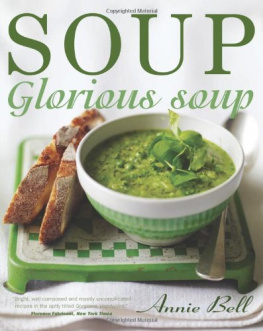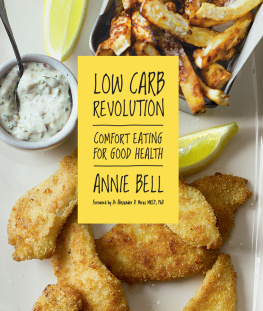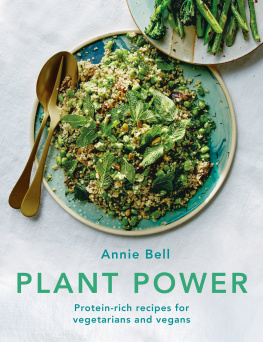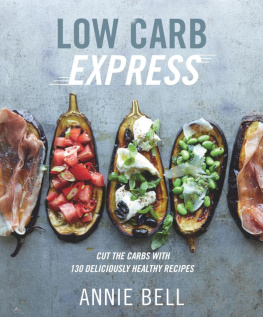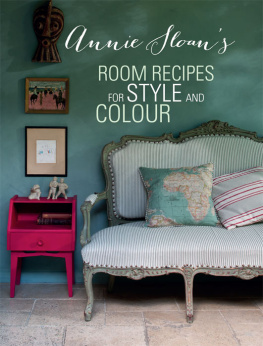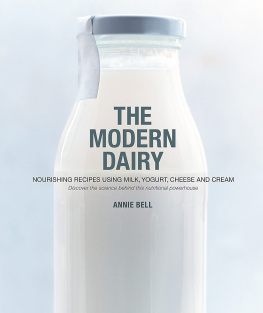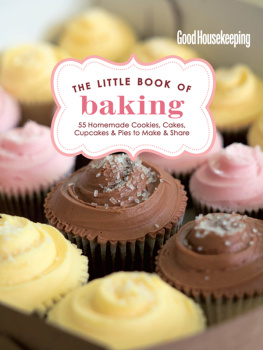
contents
How to Use This Ebook
Select one of the chapters from the and you will be taken straight to that chapter.
Alternatively, jump to the to browse recipes by ingredient.
Look out for linked text (which is blue) throughout the ebook that you can select to help you navigate between related sections.
You can double tap images to increase their size. To return to the original view, just tap the cross in the top left-hand corner of the screen.
introduction
My fourteen-year-old son has been extremely concerned about the publication of this book. But mum, if youve put absolutely everything you know about cakes into one volume, what are you going to do next? A good point, except that he really neednt worry. As the deadline has approached (or rather been and gone), I feel as though I am back there taking my finals. One last chance to perfect that Swiss Roll, to test the difference between making pastry in a food processor, a traditional mixer or by hand, one last chance to try soaking the dried fruit for a Dundee in rum, and to work the little tweaks into the Angel Smartie Cake my son has insisted on for his birthday every year since he was six. Just one more day. Which is what makes his fear so very misplaced. I could never come to the end. Baking goes hand in hand with existing, its something I do almost every day, something I do compulsively, that I both want and need to do, that I love. If I look at this collection of recipes, I feel a huge sense of pleasure at putting everything Ive enjoyed cooking up until now in writing.
The book may be in print, but it is really no different to the handwritten notebook that Ive inherited from my mother, the recipes that carried her through life. It is also a work in progress, because I will always go on adding, go on learning and changing methods, revisiting old favourites, perhaps with a new twist or the revelation of how to improve on some step that came to me at three oclock on a sleepless night. Baking for me is a rather lovely journey without end; thankfully the world is round and I can just keep on walking. And if this book can infuse you with any of the magic that it has cast on my own life, then I shall be very happy.
After writing my last book on the subject, Gorgeous Cakes, I started talking to friends about what they really wanted. And what they asked for was a book that had everything they might need between two covers, quite literally a bible. I hope you will find everything you need here all the basics, all the favourites, every occasion catered for, but I also like to think theres enough for Volume 2. After all, I dont want to do myself out of the fun of baking fat rascals for the first time, or trying out French carrs chocolat. But this is where Ive got to so far, after a lifetime of baking and twenty-five years of doing it pretty much day in and day out.
The choice of recipes has been born of a certain frustration at the direction that cakes have been leading us for some years now, when they have become ever more highly decorated more icing, more frills, ever prettier. Which is lovely, and cakes do lend themselves to that, but it has left me with a longing to retreat from this, and to get back to real cakes. I want to be able to sink into the comfort of my sofa with a no-nonsense slice of Victoria Sponge filled with fluffy buttercream and jam, or a thick cushion of sticky ginger cake, I also want the recipe for the perfect brownie to take to a friend as a present, and to be able to reel off a Red Velvet Cake or Coca-Cola Cake for a special tea or simply to have some fun with a Tomato Soup Traybake. With or without the frills, I suppose that is the point. There is an inherent beauty in these cakes, and who could capture it better than the photographer Con Poulos?
On a practical note, with this in mind, I have separated out the decoration of the cake from the method itself, listing it as little extras or tips below the actual recipe. The idea is that you can go to town if you want to, rather than presenting every cake as though it has to be dressed to the nines for a night on the town. Frills dont make for a tastier cake, they simply make for a prettier one, and even then I feel they are stacked in womens favour. I very much wanted this book to appeal to male cooks as well, most of whom are not interested in Barbie sprinkles, and are probably happy to forego the flurry of icing sugar too.
So with longevity at its heart, this is a collection of unapologetically classic recipes. I have tried to squeeze absolutely every single favourite cake, biscuit, meringue and pancake into one volume, including the less fashionable ones that I still love and feel should be up there with the others. These are the cakes that I return to again and again, tweaking this and changing that, trying out my mums version or a friends mums version, or making it in a different way. The aim of this book is that it should be lovely but real. I am most concerned that you have a recipe for a really good banana bread when there happen to be a couple of over-ripe bananas in your fruit bowl, and that you can lay your hands on a foolproof recipe for pancakes on the tired morning following a sleepover. I dont want you to be fazed because a child happens to be gluten intolerant or its your turn to send in something for the cake stall tomorrow.
Now two words in particular fill me with dread rule and technique. I swear by if it works, do it. I have never believed there is a right and a wrong way of cooking a particular dish or recipe. There are good and bad results, but how you get there is frankly immaterial. So even where a method might seem unconventional, trust me. All the recipes have been tested, and if they do deviate from the norm, its generally because theyre designed to make life easier rather than more difficult.
Which leads to my second bte noire, technique. Central to writing this book was a consuming desire to produce a handbook that anyone would be able to use. The greatest compliment for me is hearing from a fellow mum that her eight-year-old daughter likes cooking my recipes. They are intended to be childs play (without ruling out adults), and the younger the readership the better the endorsement. The recipes have been pared down to the barest minimum wherever possible.
And to further ensure the low-tech approach, there are no specialist or tricky methods. No piping bags, even where a recipe might normally call for one when making clairs, for example, or macaroons. If I felt you couldnt get halfway decent results shaping an clair with a teaspoon, I wouldnt have included the recipe in the first place. For this reason, too, there is no yeast in the book. Perhaps in the future, baking with yeast will prove the starting point for a subsequent book. However, it is specialised and there is no doubt that the greater your experience and understanding of how it works, the better the results are likely to be. Which is not the stuff of this book, where I want you to succeed first time round, without practising.
As far as possible the ingredients list will tell you how to prepare an ingredient, whether it is flour to be sifted, lemon to be zested, or fruit to be cut in a particular fashion. But if, for instance, several of the dry ingredients need sifting together, this will be detailed in the method itself. Either way, it is always worth reading through a recipe from start to finish first and ideally a little way in advance of cooking just in case, say, the butter needs to be softened, dried fruit soaked, or dough rested.



